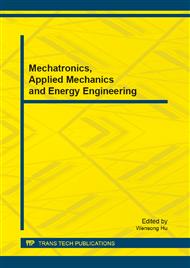p.232
p.237
p.242
p.245
p.251
p.259
p.265
p.270
p.274
Comparison Vibration Amplitude for Magnetic Damping in Turning of Stainless Steel AISI 304
Abstract:
This paper presents the improvement in chatter vibration damping using different types and arrangements of magnets, as well as comparison with normal cutting conditions in turning of stainless steel AISI 304. Chatter is defined as the self-excited violent relative motion between the cutting tool and work-piece. It is the common vibration problem that limits the productivity of machining processes, since it leads to shortened tool life, poor surface finish, breakage and premature damage of cutting tool, as well as mechanical deterioration. The occurrence of chatter during metal cutting process also causes instability of the machine tool system. Though there has been a large number of works on identifying the causes of chatter and its behavior, there is still no consensus among researchers on this very vital issue of machining. Previously, the incidence of chatter was thought to be due to forced vibration, BUE formation, cutting speed, and cracking during chip formation. Different ways to overcome this problem have been investigated, such as using piezoelectric inertia actuators, feed-forward neural network controllers, and work-piece preheating methods. In this research, permanent magnets with different size, strength, and composition are mounted around the cutting tool. A vibration sensor (accelerometer) is placed at the bottom of the tool to record the suppression of chatter amplitude in turning operation. It is shown that magnetic force can modify the frequency response function of the cutting tool resulting in improved cutting stability in turning operations. Chatter can then be effectively suppressed due to increased cutting stability.
Info:
Periodical:
Pages:
251-255
Citation:
Online since:
September 2013
Price:
Сopyright:
© 2013 Trans Tech Publications Ltd. All Rights Reserved
Share:
Citation:


